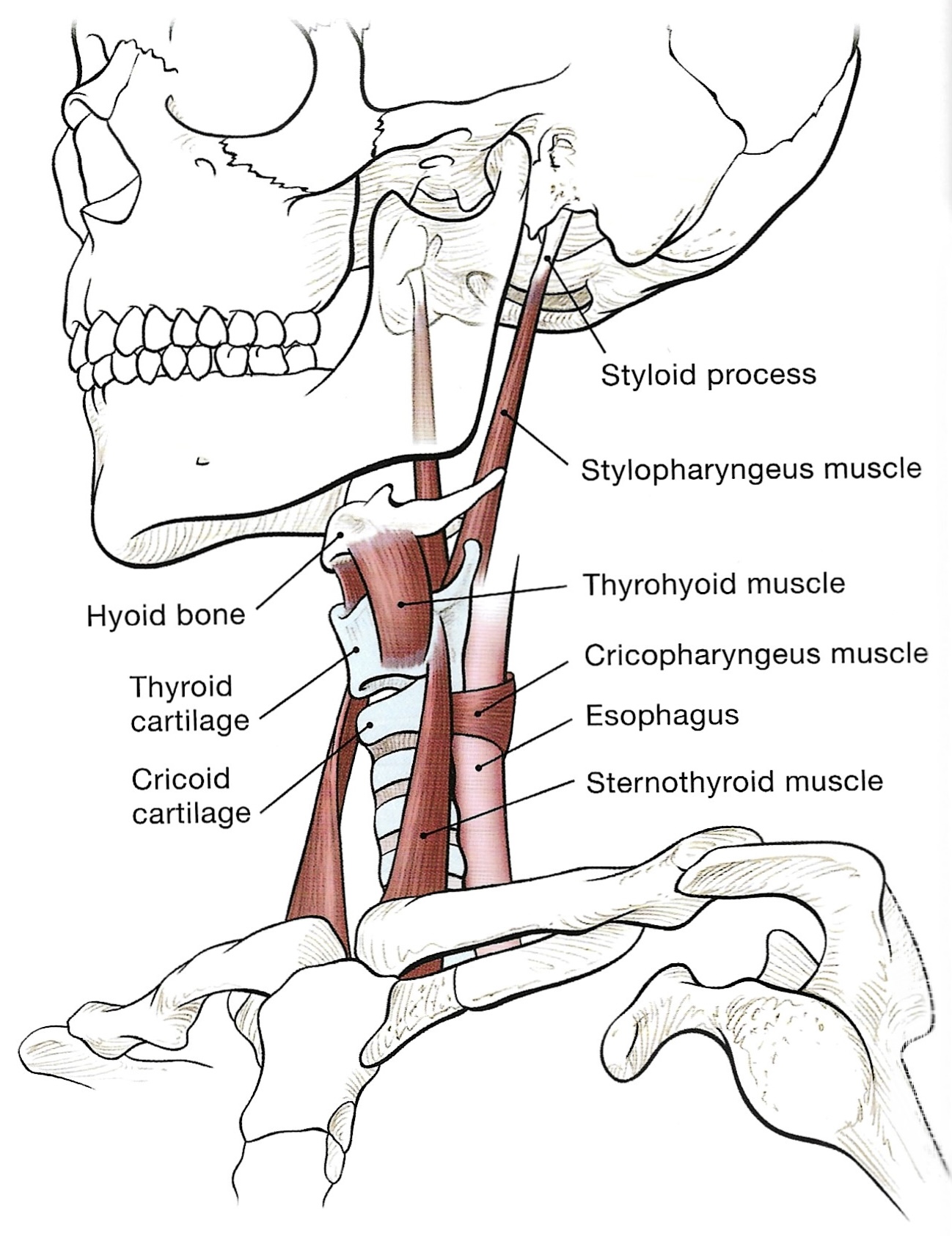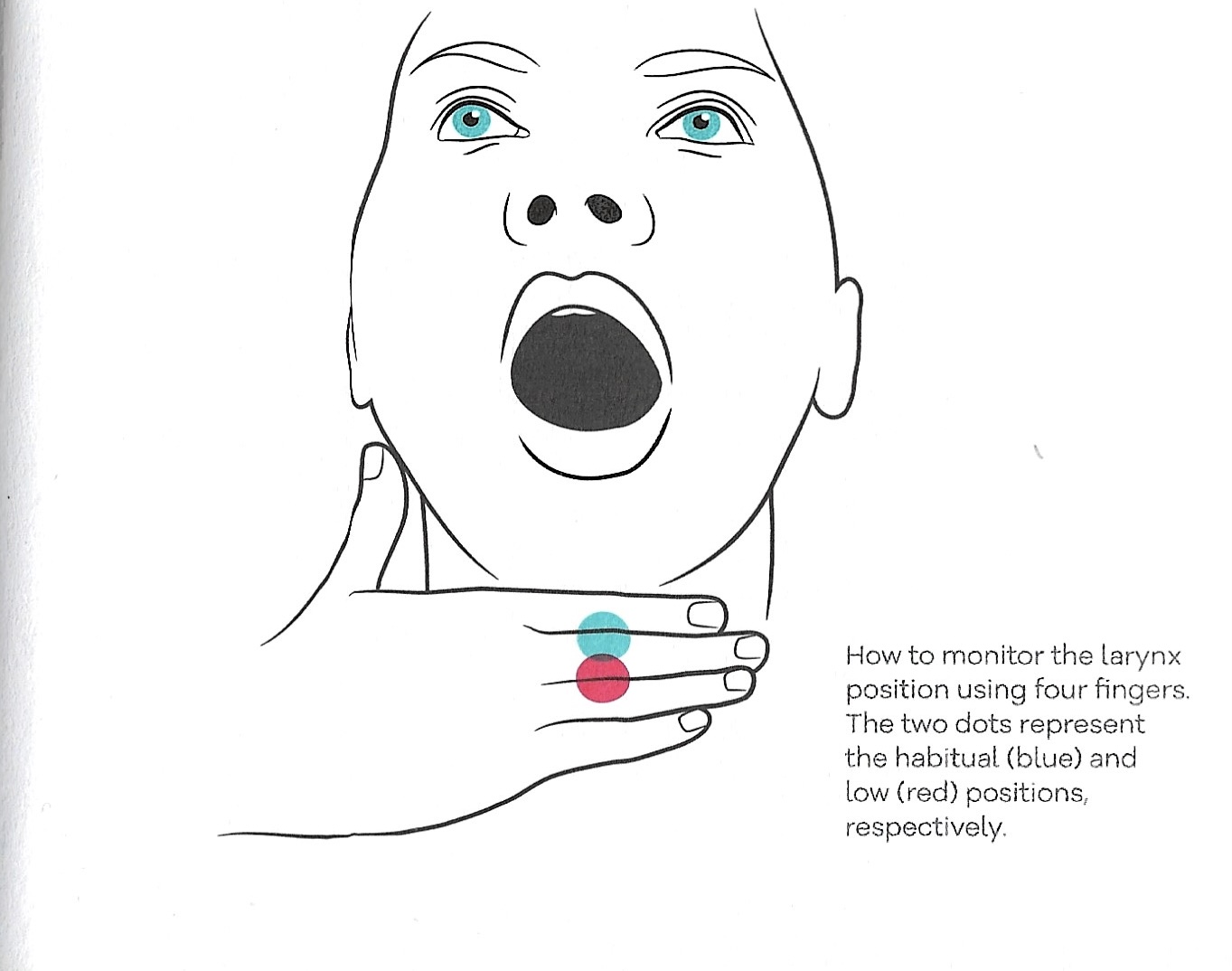Sem conhecer a ação dos músculos suspensores durante o canto, nunca iriamos perceber a importância da postura da cabeça.

Podemos pensar na laringe como um ‘elevador’, está suspensa por músculos qua a fazem subir e descer.
Estes músculos suspensores assistem a laringe em duas funções. A engolir, ou seja, a primeira função da laringe é fechar para evitar a entrada do alimento na via respiratória.

No canto os músculos suspensores da laringe devem estar livres de tensão, e a laringe deve estar numa posição neutra (baixa, não deve subir) de forma às cartilagens esticarem as cordas vocais e a garganta que é a principal cavidade de ressonância se manter na posição aberta.
“When we sing, however, the swallowing muscles that elevate and constrict the larynx tend to come into play, particularly when we sing in falsetto or head registers. In order to maintain a low position of the larynx and an open throat, the action of the swallowing muscles that elevate the larynx must be countered by muscles pulling down on the larynx, antagonistically supporting it within a web of muscles. This makes it possible to raise the pitch without interfering with the vibratory action of the larynx, and maintain an open throat. Engaging the suspensory muscles in this way is one of the most important skills a trained singer must learn.”
Anatomy of the Voice, Theodore Dimon
Tendo agora conhecimento destes da ação destes músulos percebemos que devemos manter a cabeça numa posição em que consigamos articular e mexer livremente o queixo o que nos permite cantar no registo de cabeça e falsete sem tensão, esticando as cordas vocais e abrindo a garganta para o som entrar nas cavidades de ressonância correspondentes e ao mesmo tempo temos a língua e o queixo livres para articular.

“The depth and fullness of the oscuro component of this sound quality is achieved by using a “comfortably low” larynx, which elongates the tube of the vocal tract. This laryngeal posture is often referred to as the “sob setting” because in speaking voice it’s similar to the position of the larynx during the act of sobbing.”
This is a Voice de Jeremy Fisher & Gillyanne Kayes
Reparo que é um erro comum com os meus alunos o de dirigir o olhar para o teto e levantar a cabeça sempre que temos que cantar no registo mais agudo isto eleva a laringe e aciona estes músculos suspensores, consequentemente fechamos a garganta e temos o maxilar preso para articular.
“They lower their chins to their chests, thinking that’s where the low pitches are. Then they raise their heads to the sky, stretching their necks like giraffes eating leaves from a tall tree, as though this position will somehow help them hit the high notes. It just doesn’t work like that. And the pain in the neck that results is just one more source of strain that keeps them from gaining access to the middle.”
Set your voice free. Roger Love with Donna Frazier

“All of this activity is associated with tightening the throat, as we can clearly be seen in untrained singers who “reach” for high notes by raising the larynx and tightening the entire neck and larynx in the process.”
Anatomy of the Voice, Theodore Dimon
Devemos monitorizar estes movimentos bruscos da cabeça tendo em conta que isso influência todo o funcionamento da voz. Podemos fazê-lo fazendo recurso a um espelho.
